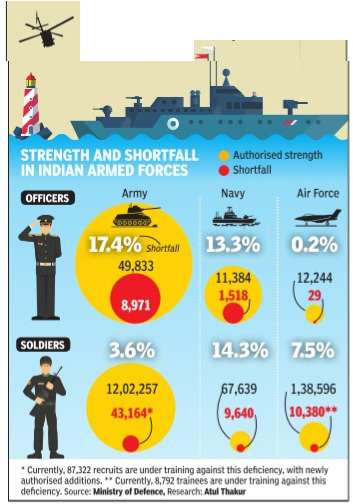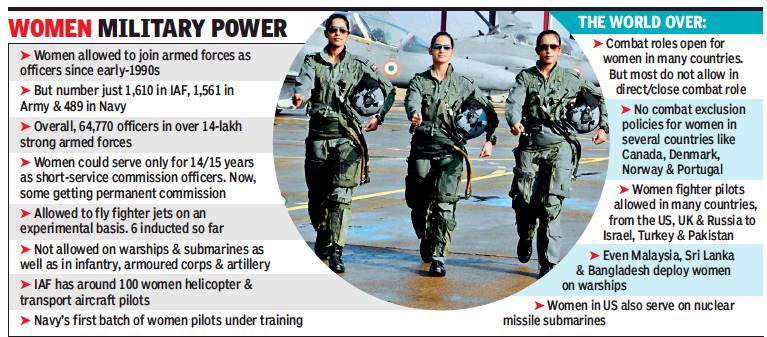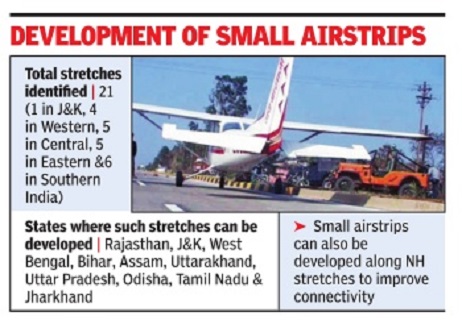Indian Air Force

This is a collection of articles archived for the excellence of their content. Readers will be able to edit existing articles and post new articles directly |
Contents |
Funds, shortage of
2018
Rajat Pandit, Funds crunch slowly crippling air force, October 20, 2018: The Times of India
Acquisitions, Operational Preparedness Hit
A severe fund crunch is slowly but steadily impacting the operational preparedness of the IAF, forcing it to put on hold acquisitions of helicopters, “smart bombs” and missiles as well as repair of runways in crucial airbases on both the western and eastern fronts.
Sources said several deals, including the ones for 48 more Russian Mi-17 V5 medium-lift helicopters (Rs 6,900 crore) and 32 additional British Hawk advanced jet trainers (Rs 3,500 crore), have been put on the back-burner due to lack of funds. “Similar is the case for Russian laser-guided bombs and other precision-guided munitions,” said a source.
More alarmingly, the paucity of funds has also adversely hit the upgrade of infrastructure and runways in airbases around the country, with at least three of them being under the Shillong-based Eastern Air Command at a time when China continues to upgrade its military aviation set-up in the Tibet Autonomous Region (TAR).
“Apartfrom having 14 major airfields, advanced landing grounds and heli-pads in TAR, China is constructing underground hangers and parking bays for its fighters by digging tunnels into mountains at some of them,” said another source.
On the western front, the IAF has already been taken to court by contractors involved in runway resurfacing works at Awantipur (J&K) and Chandigarh stations due to non-payment of outstanding bills. “Ongoing work at stations like Sirsa and Bakshi-ka-Talab (Lucknow), as also the IAF academy at Hyderabad, may suffer due to the same reasons,” said another source.
While the Rafales are slated for induction in 2019-2022, the S-400s are to be delivered in the 2020-2023 timeframe. Though the money for these two “critical operational inductions” will be paid in instalments, it has virtually emptied out the already curtailed IAF budget.
The IAF had asked for Rs 77,695 crore under the capital (modernisation etc) outlay in the 2018-2019 budget, but got only Rs 35,770 crore. Under the revenue (day-to-day operating costs, salaries etc) head, it got Rs 28,821 crore instead of the Rs 35,261 crore demanded. The story is similar for the Army and Navy, which got just 60% and 56% of their projected requirements under the capital head.
Take the over 12-lakh strong Army, for instance. The force is saddled with 68% “vintage” weaponry, 24% “current” and only 8% “state-of-the-art” equipment. It had asked for Rs 44,573 crore under the capital head but got only Rs 26,816 crore.
The allocated funds are not enough to even pay for “committed liabilities or installments” of earlier deals, leaving virtually nothing for new modernization projects.
Personnel issues
Honorary ranks in the Air Force
Sachin to be made honorary IAF group captain
New Delhi: The Indian Air Force is set to bestow the honorary rank of a Group Captain on cricketing great Sachin Tendulkar in recognition of his outstanding achievements as a sportsperson.
Honorary ranks in the Air Force are traditionally given to people who have made outstanding achievements at the national level, especially those linked to the aviation sector. Among those who have been given similar honorary ranks in Air Force are J R D Tata and Vijayapat Singhania. Both Tata and Singhania were awarded the honorary ranks of Air Commodore.
A senior Air Force officer said the IAF headquarters has decided to give Tendulkar the honorary rank of Group Captain. “We are awaiting the government’s approval,” he said. Once the proposal is approved, Tendulkar would be formally accepted as a member of the Air Force family, but he would have no official responsibilities with the IAF.
The senior IAF officer said several eminent persons of national standing have been given the honorary rank over the years. Inducting such leaders also helps in adding to the morale of the force, he said.
Indian military has a tradition of inducting outstanding individuals as honorary officers into its ranks. Recently, cricketer Kapil Dev and southern film star Mohanlal were inducted as honourary Lieutenant Colonels in the Territorial Army.
Tendulkar’s selection by the IAF is a slight departure from Air Force’s tradition. Usually, it has given the honorary rank to people who have had some role in the aviation sector. “But there is no such hard and fast rule,” the officer said.
J R D Tata had obtained the first pilot licence issued in India and later started Air India. Singhania, chairman emeritus of the Raymond group, holds several world records in hot air balloon and microlight flying.
Religion-wise
Muslim men can not grow beard in IAF: SC
The Times of India, Dec 16 2016
AmitAnand Choudhary
COURTS UPHOLD SECULAR CHARACTER OF LAW
A Muslim cannot grow a beard after joining the IAF as discipline, uniformity and cohesiveness in the armed forces cannot be sacrificed for religious beliefs which clash with rules of a defence force, the Supreme Court ruled in December 2016.
A bench of Chief Justice T S Thakur and Justices D Y Chandrachud and L Nageswara Rao said the defence forces were required to maintain a secular character as people from different faiths and religions join them to serve the nation.Regulations and policies on personal appearance are not intended to discriminate against religious beliefs.
The SC said growing a beard was not a fundamental part of Islam and upheld the government policy while dismissing the plea of two Muslim IAF officials seeking the court's direction to quash the policy.
The court did consider the case of a community like the Sikhs and noted, “No material has been produced before this court to indicate that the appellant professes a religious belief that would bring him within the ambit of Regulation 425(b) which applies to personnel whose religion prohibits the cutting off of hair or shaving the face of its members.
Women in the IAF
Permanent commission to three women officers
From the archives of The Times of India
IAF women officers win another job battle in HC TIMES NEWS NETWORK New Delhi: The Centre was directed by the Delhi HC on Tuesday to grant permanent commission to three women officers, who are on short service commission (SSC) with the Indian Air Force. Allowing a joint contempt plea by Wing Commander Rekha Singh and Squadron leaders Seema Nandan and Seema Dahiya against the government for non-compliance of the court’s earlier order, Justice Vipin Sanghi directed the defence ministry to grant permanent commission to them in six weeks on the basis of government’s policy in November, 2010. The court also directed the ministry to file a compliance report by May 24. The petitioners’ lawyer argued that one of the court’s benches had directed the government to frame a policy and grant permanent commission to women officers at par with their male colleagues. The lawyer submitted that the ministry had on November 19, 2010framed a policy but her clients were not given the benefit.
1990s- 2018
Rajat Pandit, Aeromedical Issues Part Of Analysis, August 6, 2018: The Times of India

From: August 6, 2018: The Times of India
Having inducted six women into its fighter flying stream on an ‘experimental basis’, who will be followed by a few others if found suitable, the IAF is now getting set to conduct a thorough analysis of ‘employability’ of women in its future combat philosophies and policies.
IAF sources said the ‘experimental scheme’ to induct women as fighter pilots, which will be reviewed in December 2020 after being launched in December 2015, will be examined on several fronts before a decision is taken on whether to extend it or not for the long term.
This comes soon after Flying Officer Avani Chaturvedi became the first-ever Indian woman to fly a MiG-21 ‘Bison’ jet alone in February, which was followed by a similar solo sortie by her colleague Bhawana Kanth. They still have a year to go before they become fully fledged fighter pilots ready for combat missions.
Mohana Singh, the third woman from the first batch, will graduate to supersonic fighters after she completes her flying syllabus on Hawk advanced jet trainers (AJT). The other three from subsequent batches — Pratibha Poonia, Shivangi Singh and Meghana Shanbough — are at different stages of their AJT training to learn the basics of the arduous and dangerous art of combat flying.
“Women are selected as fighter pilot trainees, like their male counterparts, only if they make the grade and volunteer for it. Data on their training, operational conversion and utilisation is being collated on a regular basis for analysis,” said a senior officer.
With it taking around Rs 15 crore to train a single fighter pilot, IAF had for long resisted inducting women in the combat stream because it felt it would disrupt “tight fighterflying schedules” if they got married and had children.
Consequently, the “impact of absence from active flying duties, whether for domestic or medical reasons, on the combat efficiency and readiness of fighter squadrons” will be one of the factors under consideration, said sources.
IAF will also study other reasons that may be considered ‘restrictive’ for women pilots, ranging from aeromedical issues, like performance under ‘high G-Force manoeuvres’, different physiological aspects and response to aviation stress, to ‘cockpit ergonomics and survival clothing’.
“The response of women candidates applying for fighter flying as a professional choice will also be assessed. Then, with the presence of women in fighter squadrons, the IAF will also consider the ‘cultural fit’ as well as the impact on unit functioning, if any,” said a source.
2012: Women fighter pilots
The Times of India, Jun 18 2016
Three gritty women will today give wings to the aspirations of hun dreds as they get inducted as the Indian Air Force's -and the country's -first ever women fighter pilots. Flight cadets Avani Cha turvedi of Madhya Pradesh, Mohana Singh of Rajasthan and Bhawana Kanth of Bihar, all in their early-20s, usher in a new chapter for the Indian defence forces, which have for long opposed the induction of women in combat roles.
For Mohana, whose father is a warrant officer in the IAF and grandfather served as a flight gunner at Aviation Research Centre, being a part of the defence forces was a foregone conclusion.
“I wanted to carry on the family legacy of serving the nation by being in defence and what better way than fighter-flying,“ she added.
With an aim to fly the best of the IAF's fighter aircraft, Mohana aspires to make her parents proud of her. “I dream of being a part of future combat missions, and fight for the nation when du ty calls,“ she added.
Mohana, Avani and Bhawana will be awarded the President's Commission as flying officers of the fighter combat stream by defence minister Manohar Parrikar at the Combined Graduation Parade at Air Force Academy , Dundigal, on the outskirts of Hyderabad. They will then be posted to either the Bidar or Kalaikunda airbase to undertake “transitional“ fighter training on the Hawks, which includes learning intensive combat manoeuvres and armament firing spread over a year to ensure the rookie pilots can handle highly-unforgiving old fighters like MiG-21s or relatively new multi-role ones like Sukhoi-30MKIs and Mirage-2000s.
Though the glass ceiling in the defence forces is now being gradually broken, the Army and Navy have no plans as of now to induct women into the infantry , armoured corps or artillery, nor allow them to serve on board warships. Even in the IAF, which has 94 women pilots flying its helicopters and transport aircraft, their entry into the fighter combat stream as short-service commission (SSC) officers has been done on an “experimental basis“ for just five years.
Landing on highways
2016: 21 highway stretches identified
Dipak Dash, IAF picks 21 highway sections for landings, Oct 18 2016 : The Times of India
Indian Air Force (IAF) has identified 21 highway stretches across the country which can be used for aircraft operation during “operational contingencies“ and natural disaster for rescue. Some of the stretches are close to the India-Pakistan border in Rajasthan and Gujarat.
Some of these also fall in border states of Jammu & Kashmir, Assam, West Bengal, Uttar Pradesh and Uttarakhand. These stretches have been identified after a “detailed study“ by the IAF keeping in mind the minimum requirement for landing and take off of fighter and other aircraft in case of emergencies.
TOI in November 2015 had first reported how IAF had asked National Highways Authority of India (NHAI) to share the details of its plans to upgrade the existing highways or build new ones so that necessary features can be incorporated to make certain portions function as “runways“ and allow for both landings and take-offs.
Sources said some of the stretches that have been shortlisted for such purpose are in Jaisalmer region in Rajasthan and Dwarka in Gujarat.
Pathankot: Air Force station
A brief history
The Times of India Jan 03 2016
Ajay Sura
Used For Deep Strikes Into Pak
Barely 40km from the Pakistan border the Pathankot Air Force station is one of the strate gically important forward airbases of India during war and peacetime.
The station is a defen sive airfield due its proximi ty to Pakistan and vital for tactically offensive oper ations of the IAF. It provides logistic support to J&K.
The Pathankot airbase along with the airfield at Amritsar provide an essen tial operational range for deep air raids into Pakistan It houses MiG-21 Bison fighter jets and MI-25 and MI-35 attack helicopters. Be sides this, it has Pechora surface-to-air missiles, oth er air defence missiles and surveillance radars. The station witnessed many at tacks during the wars with Pakistan in 1965 and 1971.
During the 1965 War, Pa kistan army's commandos had raided Pathankot air base and other forwards air bases, including Adampur and Halwara, in Punjab.
In 1971, Pakistan launched an air strike on Pathankot airbase and dam aged a portion of the run way. Though IAF veterans are happy at no loss to high value assets in Friday's at tack, they are of the view that such vital airbases, lo cated in operational areas should be guarded by the Army or by specialised forces.
Air Marshal Randhir Singh (retired), former commander of the South Western Air Command, said, “Air force is a technical force. Learning lessons from such attacks, the Centreshould ensure their security by specialised forces.“
